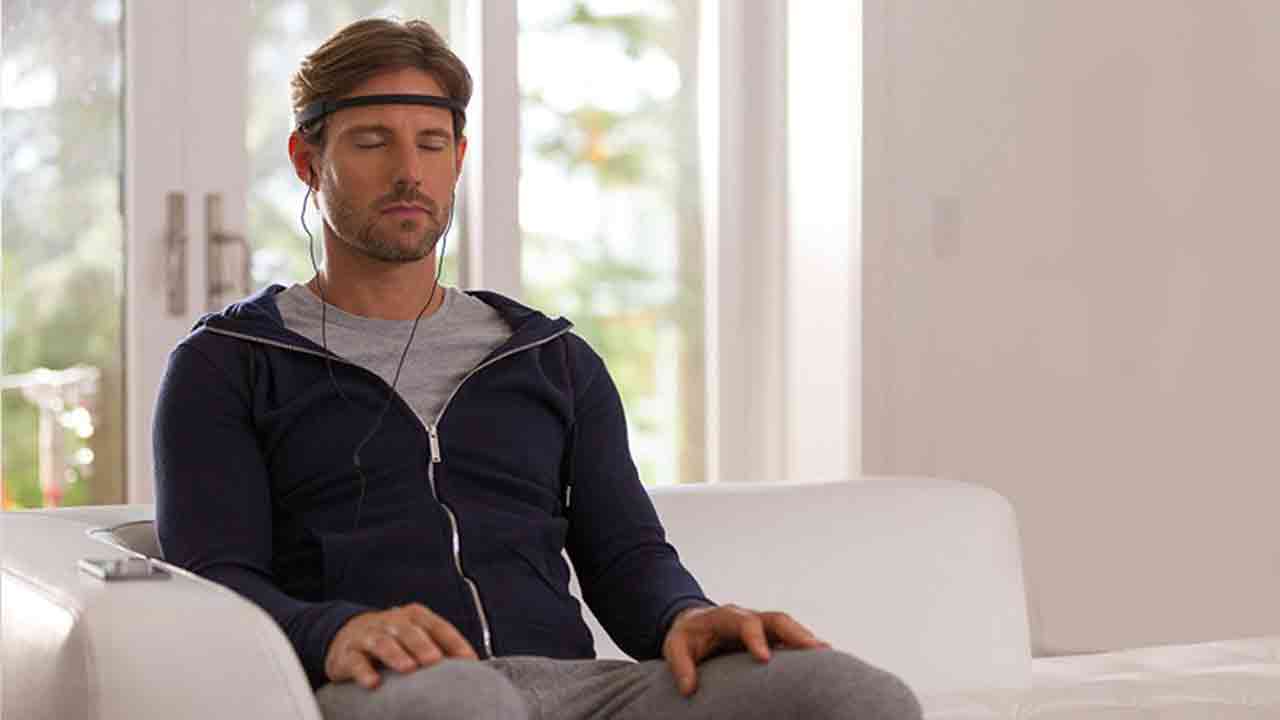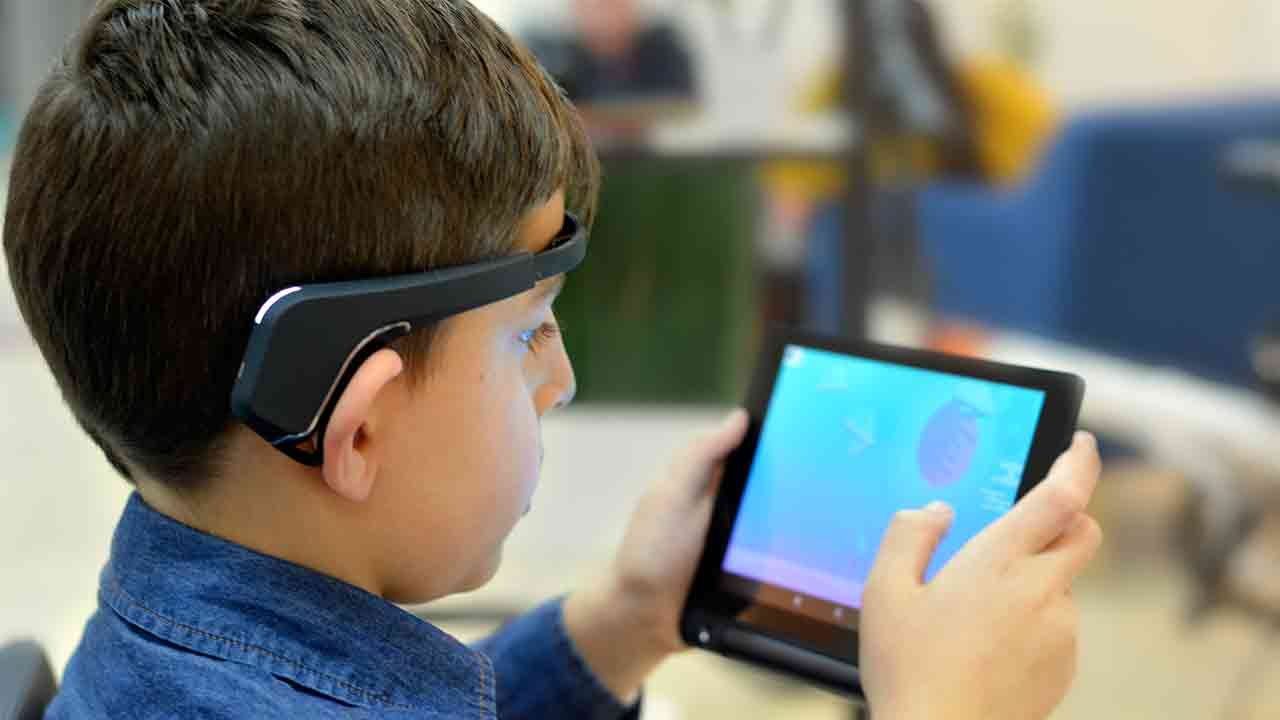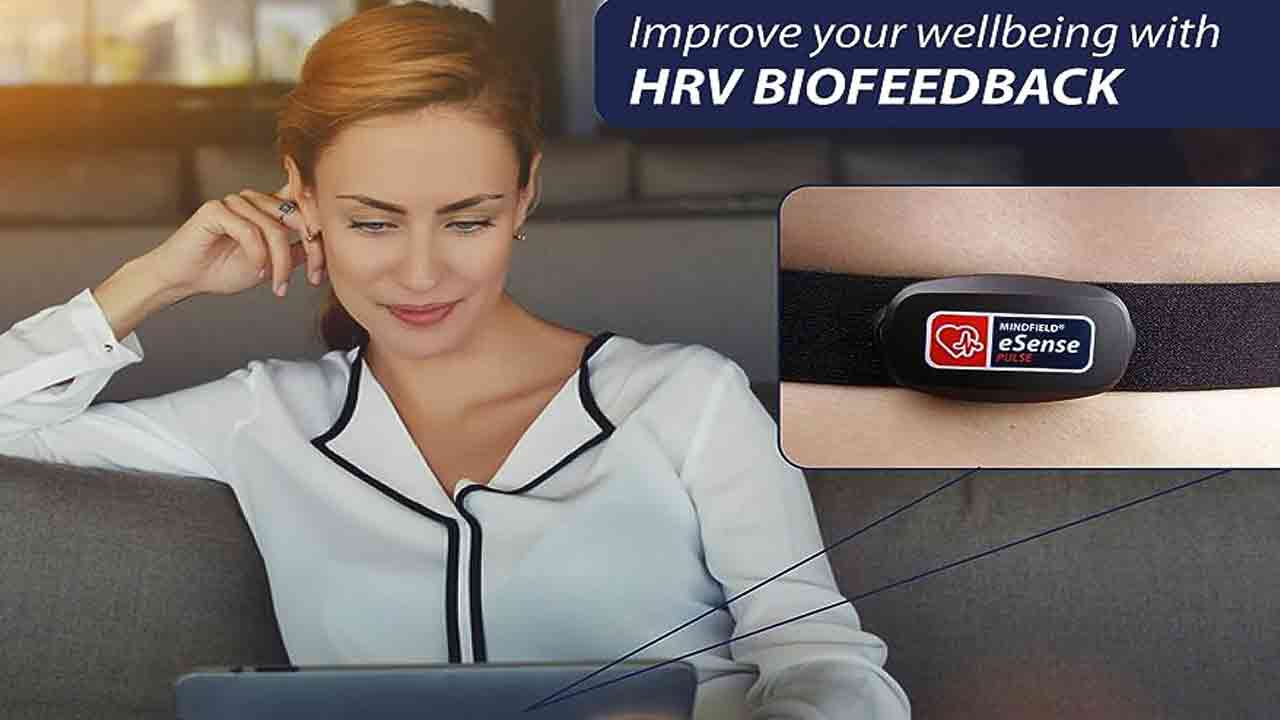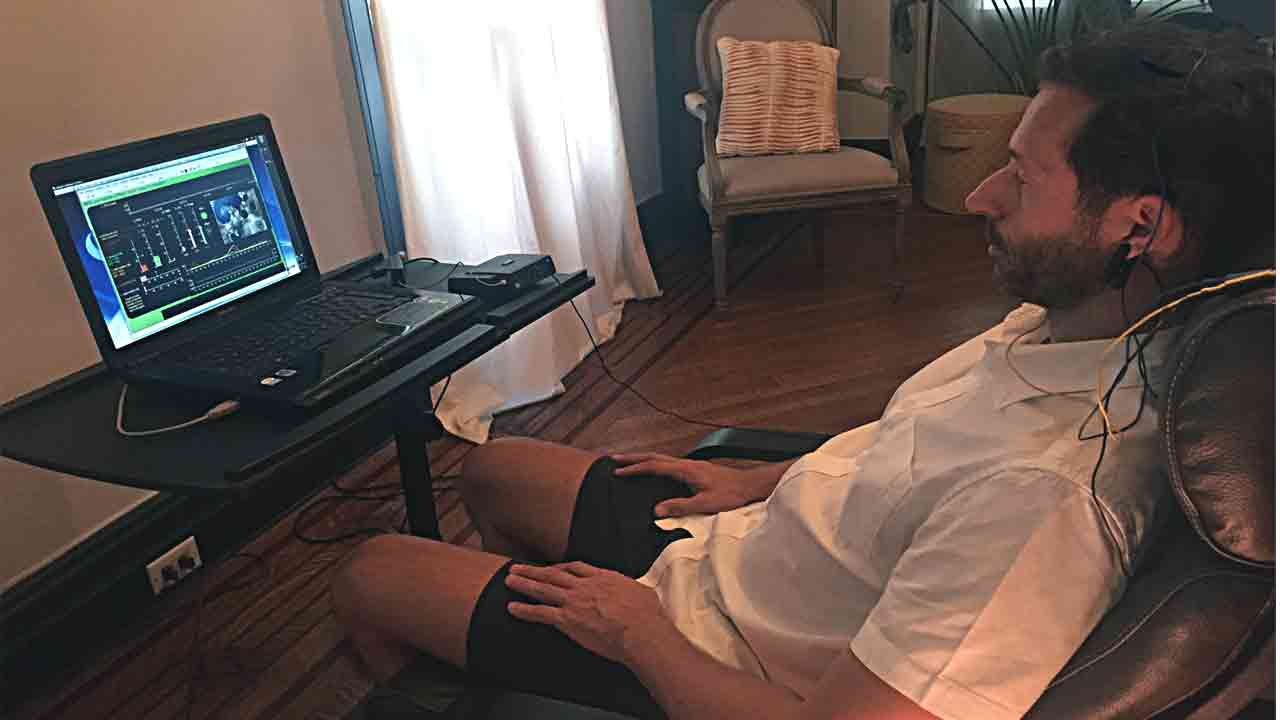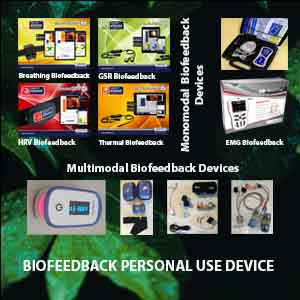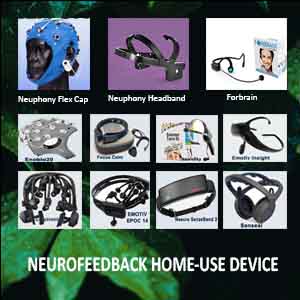
Biofeedback at Home. The right Device!
In recent years, interest in alternative and complementary therapies has surged as more people seek ways to manage their health and well-being from home. Among the most promising methods are biofeedback at home and home EEG biofeedback, which offer effective tools for self-improvement and personal growth. Traditionally limited to clinical settings, biofeedback therapy at home was once out of reach for most. However, technological advancements have ushered in a new era, allowing individuals to access at home biofeedback devices for mental health, emotional regulation, and physical wellness.
This innovative approach empowers users to monitor their physiological processes, deepen their understanding of the mind-body connection, and enhance self-regulation. As technology evolves, at home biofeedback devices have become more sophisticated, user-friendly, and widely available, making it easier than ever for people from all walks of life to experience the benefits of these powerful therapeutic techniques.
Table of Contents
Toggle- Biofeedback at Home. The right Device!
- Benefits of Biofeedback Therapy at Home
- The Type of Devices for Biofeedback at Home
- Heart Rate Monitors and Heart Rate Variability Biofeedback Devices
- Galvanic Skin Response (GSR) Sensors
- Electromyography (EMG) Devices
- Temperature Biofeedback Devices
- Respiration Biofeedback Devices
- Electroencephalography (EEG) Biofeedback or Neurofeedback Headsets
- Posture Correctors
- Virtual Reality Biofeedback Systems
- Mobile Apps
- How to Choose the Right Device for Biofeedback Therapy at Home?
- Biofeedback Modality
- Type of Sensor
- User-Friendly Interface
- Real-Time Feedback
- Data Visualization and Tracking
- Customization and Personalization
- Compatibility and Connectivity
- Battery Life and Portability
- Research and Reviews
- Professional Guidance
- Budget Considerations
- Distinguishing Medical and Non-Medical Applications of Biofeedback and Neurofeedback Home Devices
- Indication for use of Device for Biofeedback
- FAQs: Biofeedback at Home. The Right Device!
Benefits of Biofeedback Therapy at Home
Biofeedback is a technique that enables individuals to gain awareness and control over physiological processes that are typically outside conscious control. Using sensitive sensors and monitoring devices, biofeedback allows real-time tracking of various physiological parameters such as breathing, heart rate, skin conductance, muscle tension, and body temperature. As users become more aware of these physiological changes, they learn to modulate them consciously, leading to enhanced relaxation, stress reduction, and emotional regulation.
Neurofeedback, or home EEG biofeedback, on the other hand, takes this concept to the next level by focusing on brain activity. Electroencephalography (EEG) headsets and neurofeedback measures are used, and feedback on brainwave patterns is provided. This feedback helps individuals understand their brain’s electrical activity and encourages them to modify it, improving cognitive function, emotional balance, and mental clarity.
Biofeedback at home offers many benefits that contribute to improved mental, emotional, and physical well-being. Individuals accessing user-friendly and convenient biofeedback devices can experience transformative effects. Here are some key benefits of practicing biofeedback therapy at home:
Convenience and Accessibility
One of the most significant advantages of home biofeedback is its convenience. Moreover, users can schedule sessions at their own pace and easily integrate them into daily routines, eliminating the need for clinical visits. With this accessibility, individuals gain the freedom to manage their well-being on their terms, free from the restrictions of appointments or geographic barriers.
Stress Management and Relaxation
Stress has become a prevalent issue in modern life, affecting both mental and physical health. Biofeedback therapy at home enables individuals to recognize and understand their stress responses by monitoring physiological parameters such as heart rate, skin conductance, and muscle tension. With this awareness, users can learn relaxation techniques, breathing exercises, and mindfulness practices to manage stress effectively.
Emotional Regulation and Mood Enhancement
Emotional imbalances can significantly impact daily life and overall well-being. By engaging in biofeedback training at home, individuals can better understand their emotional states and learn to regulate them. As users gain better control over their emotions, they may experience improved moods and a more balanced emotional state.
Pain Management
Biofeedback has shown promising results in managing chronic pain conditions. Individuals learn to identify and modulate pain-related physiological responses through home EEG biofeedback devices. This practice can reduce pain perception, increase pain tolerance, and improve the quality of life for chronic pain patients.
Cognitive Enhancement
Neurofeedback is a specialized form of biofeedback that focuses on brainwave patterns and can potentially enhance cognitive function. By utilizing neurofeedback training with home EEG biofeedback headsets, individuals can optimize their brainwave activity, thereby improving attention, memory, and mental performance. As a result, this benefit becomes especially valuable for students, professionals, and individuals seeking to maintain cognitive vitality throughout their lives.
Customization and Personalization
Home-based biofeedback devices often feature user-friendly interfaces, allowing personalized training sessions. Users can tailor their biofeedback experiences to address specific health goals or challenges with these devices. Customization ensures that individuals receive targeted feedback and training, thereby maximizing the effectiveness of their biofeedback practice.
Cost-Effectiveness
Home-based biofeedback can be more cost-effective in the long run compared to traditional clinical biofeedback sessions. Investing in a biofeedback device for personal use eliminates the need for repeated visits to healthcare professionals, making it a more affordable option for ongoing training and wellness maintenance.
Empowerment and Self-Awareness
Biofeedback at home fosters self-awareness and empowers individuals to actively engage in promoting their health and well-being. Users can gain a deeper understanding of their bodies and minds by gaining insights into their physiological responses. As a result, this understanding fosters a sense of empowerment and autonomy, enabling them to take greater control over their health.
Enhanced Motivation and Engagement
Many home-based biofeedback devices incorporate gamification elements, transforming the training process into an engaging and enjoyable experience. Manufacturers add these elements to enhance user motivation and commitment to regular practice. Consequently, this approach contributes to more significant and lasting improvements in well-being.
Holistic Approach to Health
Biofeedback therapy at home promotes a holistic approach to health and wellness by emphasizing the mind-body connection. It encourages individuals to consider the interplay between their thoughts, emotions, and physiological responses, thus fostering a more integrated and balanced approach to self-care.
In this way, biofeedback therapy at home offers a transformative opportunity for individuals to participate actively in their mental and physical well-being. With accessible and user-friendly biofeedback devices, individuals can enjoy stress reduction, emotional regulation, pain management, and cognitive enhancement. As these technologies evolve, the future holds great promise for home-based biofeedback to become integral to daily wellness routines, empowering individuals to lead healthier, more fulfilling lives.
The Type of Devices for Biofeedback at Home
Biofeedback at home has become increasingly popular due to the availability of various devices that enable individuals to monitor and regulate their physiological responses. These devices come in different forms, catering to diverse physiological parameters and user preferences. Here are some of the common types of devices used for biofeedback at home:
Heart Rate Monitors and Heart Rate Variability Biofeedback Devices
Heart rate monitors are widely used for biofeedback at home and provide real-time feedback on heart rate variability (HRV). HRV is the variation in time intervals between consecutive heartbeats and is associated with the body’s ability to adapt to stress. Heart rate monitors can be worn as chest straps, wristbands, or finger sensors, offering insights into stress levels and relaxation techniques.
Galvanic Skin Response (GSR) Sensors
GSR sensors measure the skin’s electrical conductance, which changes with variations in sweat gland activity. As a result, these sensors serve as valuable indicators of stress and emotional responses. Typically, GSR sensors can be attached to the fingers or palms, providing biofeedback on stress levels. By using this feedback, users can learn relaxation techniques to manage stress effectively.
Electromyography (EMG) Devices
EMG devices monitor muscle tension and relaxation. They use surface electrodes placed over the skeletal muscles to measure their electrical activity, helping users become aware of tension patterns and learn techniques for muscle relaxation, stress reduction, and pain management.
Temperature Biofeedback Devices
Temperature biofeedback devices measure changes in skin temperature, which can reflect physiological arousal and stress. These devices can be worn on the fingers or other body parts and enable users to learn relaxation techniques to promote stress reduction and emotional regulation.
Respiration Biofeedback Devices
During respiratory biofeedback, bands are placed around the abdomen or chest to monitor breathing patterns and respiration rate. The respiration rate monitors and tracks breathing patterns and provides feedback on the depth and pace of breathing. Learning proper breathing techniques through biofeedback can help reduce stress, improve focus, and enhance relaxation.
Electroencephalography (EEG) Biofeedback or Neurofeedback Headsets
Headsets for home EEG biofeedback at home are used for neurofeedback, a specialized form that focuses on brainwave patterns. These headsets record electrical activity in the brain and provide real-time feedback to help users train their brains for improved cognitive function, emotional regulation, and overall well-being.
Posture Correctors
Posture correctors are biofeedback devices designed to improve posture and reduce musculoskeletal discomfort. They provide gentle reminders or vibrations when the user reclines or adopts poor posture, helping to promote better alignment and posture habits.
Virtual Reality Biofeedback Systems
Virtual reality (VR) systems combine biofeedback technology with immersive virtual environments. These systems can help users practice relaxation techniques, stress reduction, and emotional regulation in realistic scenarios, enhancing engagement and effectiveness.
Mobile Apps
Mobile apps can transform smartphones or tablets into biofeedback devices. These apps use built-in sensors, such as cameras or accelerometers, to measure physiological responses and provide real-time feedback to users.
Thus, various biofeedback devices have been developed to make biofeedback at home accessible and convenient. Depending on individual preferences and wellness goals, individuals can choose from various options, including heart rate monitors, GSR sensors, EMG devices, temperature biofeedback devices, headsets for home EEG biofeedback therapy, posture correctors, virtual reality systems, and mobile apps. By utilizing these devices, individuals empower themselves to become more aware of their physiological responses. As a result, they can actively participate in improving their mental, emotional, and physical well-being from the comfort of their own homes.
How to Choose the Right Device for Biofeedback Therapy at Home?
Choosing a suitable biofeedback device ensures an effective and personalized training experience. When selecting a device for biofeedback at home, consider the following factors:
Biofeedback Modality
Determine the specific physiological parameter you want to focus on. Biofeedback devices can measure various signals, such as heart rate variability (HRV), skin conductance (GSR), muscle tension (EMG), and body temperature. Identify your wellness goals and select a device that aligns with those objectives.
Type of Sensor
Different biofeedback devices utilize various sensors to measure physiological signals. Some devices use wearable sensors, while others may require direct contact with the skin. When choosing a device with suitable sensor technology, consider comfort and ease of use.
User-Friendly Interface
Look for devices with intuitive and user-friendly interfaces. A clear display and easy-to-navigate menus ensure a seamless training experience, especially for those new to biofeedback.
Real-Time Feedback
Real-time feedback is a critical aspect of biofeedback training. Therefore, ensure that your chosen device provides immediate feedback on your physiological responses. By receiving real-time data, you can better understand the impact of your thoughts and actions on your body, facilitating improved self-regulation.
Data Visualization and Tracking
Data visualization features are essential for monitoring progress over time. Thus, choose a device that tracks changes in your physiological responses and provides insights into your training journey. By accessing this information, you can better understand your development and make informed adjustments to your biofeedback practice.
Customization and Personalization
Opt for a device that allows you to customize your training sessions based on your needs and goals. By personalizing your training, you can target specific areas for improvement and achieve optimal results. This tailored approach enhances the effectiveness of your biofeedback practice.
Compatibility and Connectivity
Consider the biofeedback device’s compatibility with your smartphone, tablet, or computer. Wireless or Bluetooth connectivity allows you to sync data to companion apps, which makes tracking progress and analyzing results much easier.
Battery Life and Portability
For convenience, select a device with decent battery life. Long-lasting batteries reduce the frequency of charging, allowing uninterrupted training sessions. Additionally, consider the device’s portability, especially if you plan to use it on the go.
Research and Reviews
Do thorough research on different biofeedback devices available on the market. Read user reviews and testimonials to understand others’ experiences using the devices. Look for devices with positive feedback and proven efficacy.
Professional Guidance
While home-based biofeedback devices are designed for self-use, seek professional guidance when needed. If you have specific health concerns or conditions, consult a healthcare professional or a biofeedback therapist who can offer personalized recommendations and training protocols.
Budget Considerations
Biofeedback devices vary in price, ranging from affordable options to more sophisticated and expensive ones. Set a budget that aligns with your needs and explore devices within that price range.
In conclusion, choosing the suitable biofeedback device for home use requires thoughtful consideration of your wellness goals, the type of physiological parameters you want to measure, ease of use, customization options, and compatibility with your lifestyle. By selecting a suitable device, you can embark on a transformative journey of self-awareness and empowerment, effectively harnessing the mind-body connection to enhance your overall well-being.
Distinguishing Medical and Non-Medical Applications of Biofeedback and Neurofeedback Home Devices
Biofeedback and Neurofeedback Home Use Devices and systems are used for both medical and non-medical uses, and the dividing line between them may be thin. Non-medical application of neurofeedback can be considered primarily as personal improvement and conditioning for the brain and mind: to improve relaxation, attention, focus, concentration, and self-awareness, or as an adjunct to meditation, stress relief, counseling, hypnosis, or achieving altered states of consciousness. It can be done without professional intervention.
In the nonclinical embodiment, most of the same functions and capabilities are present, but they are presented in the context of an educational and recreational device. It is nonetheless true that the actual benefits may be essentially the same in both embodiments depending on how the user configures and applies the device. However, the labeling and claims are different. The same instrument is being provided in both cases but with different intent.
Thus, the difference between the medical and non-medical embodiments of biofeedback and neurofeedback home use devices lies primarily in users’ claims, expectations, and applications.
Indication for use of Device for Biofeedback
Overview of Biofeedback Applications
Biofeedback devices have numerous applications and can effectively address various physical, mental, and emotional conditions. Some common indications for using biofeedback devices include:
1. Stress Management: Biofeedback teaches individuals to recognize and control their stress responses. This promotes relaxation and reduces the impact of stress on both the body and mind.
2. Anxiety and Mood Disorders: Home EEG biofeedback can assist individuals with anxiety disorders and mood disorders by promoting emotional regulation. In this way, it helps reduce symptoms of anxiety and depression.
3. Chronic Pain: Biofeedback is used to manage chronic pain conditions, such as migraines, tension headaches, fibromyalgia, and back pain, by improving pain coping mechanisms and reducing pain perception.
4. Hypertension (High Blood Pressure): Heart rate variability biofeedback has shown promise in helping individuals regulate blood pressure levels and reduce hypertension.
Sleep, Attention, and Trauma Management
5. Insomnia and Sleep Disorders: Biofeedback can improve sleep quality by promoting relaxation and reducing arousal before bedtime.
6. Attention-Deficit/Hyperactivity Disorder (ADHD): Neurofeedback, a type of biofeedback, has been used as an adjunct therapy for individuals with ADHD to enhance attention and focus.
7. Post-Traumatic Stress Disorder (PTSD): Biofeedback can help manage symptoms of PTSD, such as hyperarousal and anxiety.
8. Sports Performance Enhancement: Biofeedback has been utilized to optimize athletic performance by training athletes to regulate their physiological responses and achieve peak performance states.
Additional Applications and General Well-Being
9. Respiratory Disorders: Biofeedback has been explored in managing asthma and other respiratory conditions, helping individuals improve breathing techniques and lung function.
10. Gastrointestinal Disorders: Biofeedback has been used to reduce symptoms and improve gut function in conditions like irritable bowel syndrome (IBS).
11. Raynaud’s Disease: Temperature biofeedback can assist individuals with Raynaud’s disease, improve blood flow to extremities, and reduce symptoms during cold exposure.
12. Preparations for Medical Procedures: Biofeedback techniques have been used to help individuals manage anxiety and pain during medical procedures.
13. Performance Anxiety: Biofeedback can help individuals, such as musicians or public speakers, manage performance anxiety and improve focus during high-pressure situations.
14. General Well-Being and Relaxation: Biofeedback can be used for general wellness and relaxation, promoting a sense of calm and overall well-being.
Here is the complete list of pathological states and disorders for which neurofeedback and biofeedback can be effectively used.
How to choose Devices for Biofeedback Therapy at Home
- Racing heartbeat, chest tightness,
- Chronic generalized stress and its vegetative symptoms,
- Difficulties relaxing,
- Rapid shallow breathing,
- Low daily energy,
- Anxiety
- Depression,
- Insomnia,
- Emotional instability,
- You can use it in coaching and competitive sports to achieve optimal performance,
- Optimal performance in any sphere of life.
- Fast, shallow breathing,
- Hyperventilation,
- Lightheadedness,
- Train abdominal breathing,
- Balance breath cycle,
- Stress and its vegetative symptoms,
- Depression,
- Attention and concentration problems,
- Anxiety disorders,
- Insomnia problems,
- Asthma and other bronchial tract and lung problems,
- Heart disease and hypertonia,
- And many other conditions related to insufficient relaxation skills.
- Training and re-training of muscles,
- Strengthening of muscles,
- Muscle building and strengthen individual muscles or muscle groups,
- Muscle relaxation and tension relief,
- Stress reduction/management
- Relaxation of typical stress muscles (forehead, jaw, shoulder, neck)
- Reduction/management of vegetative symptoms of stress (high blood pressure, tachycardia, arrhythmia, tachypnea, etc.),
- Coordination exercises,
- Tension headache,
- Panic attack/anxiety,
- Inner tension relief,
- Support psycho-education / self-awareness,
- Retraining individual muscles or muscle groups (after stroke, trauma, etc.),
- Pain relief (back pain, etc.),
- Posture correction,
- Optimal performance in sports and education, etc.
- Cold hands or feet,
- General stress/ tension and its vegetative symptoms (cold hands, tachycardia, arrhythmia, high blood pressure, tachypnea, etc.),
- Poor peripheral circulation, Raynaud’s syndrome,
- Blood pressure fluctuations,
- Guide for meditation, increase depth of meditation,
- Anxiety,
- Panic attack,
- Depression,
- Migraine and tension headache,
- Neurosis,
- Chronic pain,
- Phobias,
- Blood pressure fluctuations,
- Optimal performance (public speech, taking exams, etc.).
- Sweaty hands,
- Anxious, distracted thoughts,
- Agitated mood,
- Low anger threshold,
- Poor Impulse Control,
- Emotional instability,
- Anxiety,
- Panic disorders,
- Specific phobias,
- High blood pressure,
- Sleep disorders,
- Headache (tension, migraine),
- Stress and the management of its consequences,
- Optimal performance.
Biofeedback and Neurofeedback Home Use Devices
The Science Behind Neurofeedback
Neurofeedback has been extensively researched and successfully utilized in the US and Europe for decades, with its effectiveness consistently demonstrated in numerous studies conducted by universities, including those in Europe.
The brain’s electrical activity is divided into wavebands representing a specific functionality and frequency. Depending on the situation in which you are, the wave ranges are differently pronounced. Those results reveal individual characteristics of brain activity: when sitting relaxed on the couch, the composition of the wavebands differs from that observed in an EEG (electroencephalogram) during a stressful examination task. Neurofeedback divides the electrical activity of your brain into its frequency bands and displays the proportion of each frequency band in the total spectrum.
Neurofeedback aims to enhance cognitive performance and decrease EEG levels, which are more closely associated with diminished attention. In the process, the brain learns over time that the desired change in brain wave patterns is associated with a reward.
Enhancing Cognitive Function Through Neurofeedback Training
The unique aspect of home EEG biofeedback is that you can utilize your strategy to influence your EEG frequencies. Home EEG biofeedback and related training are non-drug therapies for maintaining and improving cognitive functions. Neurofeedback teaches you how to influence your “brain performance” through active participation and continuous feedback. In addition, you can achieve solid inner control. The self-confidence in your own performance and abilities increases and can, therefore, positively moderate the genuine effect of home EEG biofeedback training. With neurofeedback, you can train your attention and relaxation skills, thereby reducing existing deficits.
In this section, you will find neurofeedback headsets suitable for everyone, whether you are a beginner, an advanced user, or a professional. Select your preferred home EEG biofeedback headset from manufacturers such as NeuroSky, Macrotellect, Myndplay, InteraXon, and others.
Understanding Biofeedback Home-Use Devices
A biofeedback home-use device is a portable, user-friendly electronic tool designed to help individuals monitor and manage various physiological functions and responses. These devices typically measure parameters like heart rate, breathing rate, skin conductance, muscle tension, and other relevant metrics. The primary purpose is to provide real-time feedback, allowing users to become more aware of their internal states and learn to control them. By visualizing the data displayed, users gain insights into how their body responds to stress, anxiety, and other conditions, promoting self-regulation and relaxation.
How Biofeedback Devices Work
Biofeedback devices usually include sensors applied to specific body areas, such as the fingertips, wrist, or chest, to capture physiological signals. These sensors transmit data to a central unit or a smartphone app using Bluetooth or other wireless technologies, presenting information through visual cues, sounds, or vibrations in an easily understandable way. As users engage in relaxation or stress-reduction activities, they can observe changes in the data and make adjustments to reach desired outcomes. Here, you’ll find biofeedback devices for home use that measure physiological signals, including muscle tension (EMG), heart rate, blood flow, respiration, galvanic skin response (GSR), and temperature.
Biofeedback: A Complementary Approach, Not a Standalone Solution
It’s important to note that while biofeedback can benefit many individuals and conditions, it should not be considered a standalone treatment for severe medical conditions. It is essential to consult with a healthcare professional or qualified practitioner to determine the appropriateness of using biofeedback devices for specific health concerns and to ensure proper guidance and support during the process.
You can visit our Shop page to see the best neurofeedback home-use device.
You can visit our Shop page to see the best biofeedback home-use device.
Please go to the page “Neurofeedback in pathological states and disorders” to learn how to choose neurofeedback devices for personal use at home.
FAQs: Biofeedback at Home. The Right Device!
Biofeedback is a method that enables individuals to gain awareness and control over their physiological functions through the use of sensors and real-time feedback. At home, devices will allow you to monitor heart rate, breathing, muscle tension, temperature, and more, helping to improve relaxation, focus, and overall well-being.
Biofeedback tracks physiological signals, such as heart rate or body temperature. Neurofeedback utilizes EEG technology to enhance brain activity, thereby improving focus, attention, and emotional balance.
Yes, most home-use biofeedback devices are designed for safe, independent use for biofeedback therapy at home. However, for specific health conditions, consulting a professional is recommended for proper guidance.
Choose based on your goals:
- For stress/anxiety: HRV, breathing, or GSR.
- For attention/focus: Neurofeedback (EEG).
- For muscle tension or pain: EMG biofeedback.
- For circulation: Temperature biofeedback.
- For emotional balance: GSR biofeedback.
They can be both. Devices marketed for non-medical use are intended for wellness, focus, and stress relief. The same technology may be used medically, but it must meet regulatory standards and adhere to labeling requirements.


